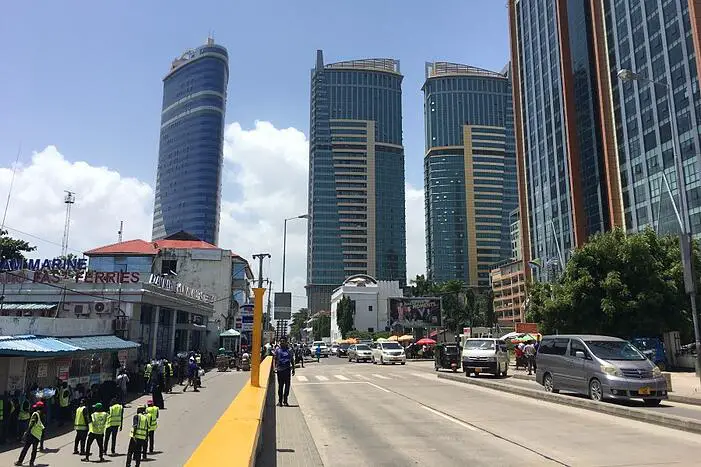The central bank of Tanzania (BoT) released the monthly economic review report on Wednesday, August 2021. The report brought various in-depth details on the performance of the life-pumping sectors of the economy in Tanzania, including exports, imports, and money supply.
Inflation
Tanzania has managed to sustain the inflation to a considerate level over the past month; hence in the recent report, the East African country has continued to keep the inflation on a low level and within the benchmarks set forth at national and regional levels.
The report argued that this is attributed to sufficient domestic food supply, stable exchange rate, and prudent fiscal and monetary policies.
“Twelve-month headline inflation increased to 3.6 per cent from 3.2 per cent recorded in the corresponding period in 2020 and 3.3 per cent recorded in May 2021. The increase was mainly attributed to an increase in prices of non-food items”, the Bank of Tanzania report noted.
On the same note, the core inflation, “whose index accounts for the largest share in the consumer price index, increased to 4 per cent in June 2021 from 3.7 per cent in May 2021, attributed to increasing in prices of textile fabrics, cloth and shoes, restaurants and accommodation services and rent”, BoT report showed.
Also, on energy, fuel, and utilities, inflation increased to 3.2 percent in June 2021 from 2.1 percent in May 2021; this was contributed by the increase in oil prices in the global market.
Money and Credit
On this portion of the economy, the report lens painted a rather promising canvas, whereby the central bank’s Monetary Policy Committee (MPC) found the banks sustained adequate liquidity and stabilized money market interests rates at low levels, which ultimately develops favorable conditions for “increasing bank lending to the private sector and reducing the interest rate on loans.”
The annual growth of extended broad money supply (M3) grew by 11.6 percent in the year ending June 2021, compared to 7.9 percent in the preceding month.
On the same note, the report showed that “domestic credit, extended to both private sector and central government, maintained positive growth rate, despite the adverse effects of the COVID-19 pandemic. Private sector credit recorded an annual growth of 3.6 per cent in June 2021, lower than 4.7 per cent and 5.5 per cent in May 2021 and June 2020, respectively.”
Government Budgetary Operations
As Tanzania rolls out new economic instruments to attract investment and build its internal development portfolio, it is vital to develop strong domestic revenue streams. In this case, the report indicated that, despite the COVID-19 pandemic, the revenue collection was satisfying.
“Domestic revenue collection in June 2021 was 87.8 per cent of the target amounting to $911 million. Out of the total revenue, central government revenue was $886 million and the balance was from local government own sources. During the month, tax revenue was $757 million, which was 88.6 per cent of the target with an impressive performance in import taxes associated with an increase in value of dutiable imports,” the central bank report noted.
On the other side of the sector, the expenditure of the Tanzanian government mounted to around $1.2 billion, of which the bank argued that at least $566 million and $652 million were spent on recurrent activities and development projects respectively.
“Locally financed development expenditure amounted to $522 million which is 78.8 per cent of development expenditures,” the bank noted.
Debt
Tanzania is also facing a fair amount of debt concerns. According to the central bank report, the national debt stock amounted to around $33 billion at the end of June 2021, increasing $1.08 billion and $4.08 billion from the past month and similar months in 2020, respectively.
“Public debt (external and domestic) constituted 82.9 per cent of the total national debt, while external debt (public and private) accounted for 75.6 per cent of the stock,” the BoT report showed.
From an analytical angle, the report further showed that the stock of external debt, making up the public and private sector, was more than $25 billion by the end of June 2021, which is an increase of $239 million and $2.58 billion from the level registered in the past month and the similar month in 2020.
Exports
According to the report, during the year ending June 2021, the value of exports of goods and services amounted to around $8.8 billion compared to more than $9.3 billion during a similar period in 2020.
“The decline was observed in travel receipts, due to effects of the pandemic. Meanwhile, exports of goods increased by 10.0 per cent to $ 6.457.9 billion, owing to the good performance of non-traditional exports. The value of non-traditional exports rose to $5.567.8 billion from $4.574.9 billion, with significant increase registered in exports of gold, manufactured goods, horticultural products and other exports,” the bank report noted.
However, the report also noted that gold exports, which accounted for 54.4 percent of total non-traditional exports, increased by around $ 437.5 million to $3.028 billion, which the bank argues as the highest level of earning ever reached. In addition, it contributed to the increase in gold prices in the global market and the Tanzanian government’s efforts to maximize the industry’s potential.
On that note, the report also mentioned that “during the period, other exports surged by 73 per cent to $665.5 million, emanating from a significant increase in exports of rice and beans to neighbouring countries,”.
Imports
On this section of the economy, the report showed that, during the year ending June 2021, imports of goods and services declined to around $9.86 billion from more than $10 billion in the corresponding period in 2020, this being caused by the downturn of travel payments, building and construction materials as well as transport equipment.
“Oil imports which constituted 18.4 per cent of all goods imports, increased marginally by 1.3 per cent to $1.576.7 billion mostly on account of volume effect. The recent increase of oil prices in the world market is projected to revert to the pre-pandemic level, which could adversely affect the balance of payments. Goods import bill increased to $795.3 million from $575.4 million recorded in June 2020, due to a rise in oil imports as well as capital and consumer goods,” the bank report argued.
The sector is argued to portray rather “modest performance” despite the pandemic shocks, which have affected countless economies across the region and the globe.











